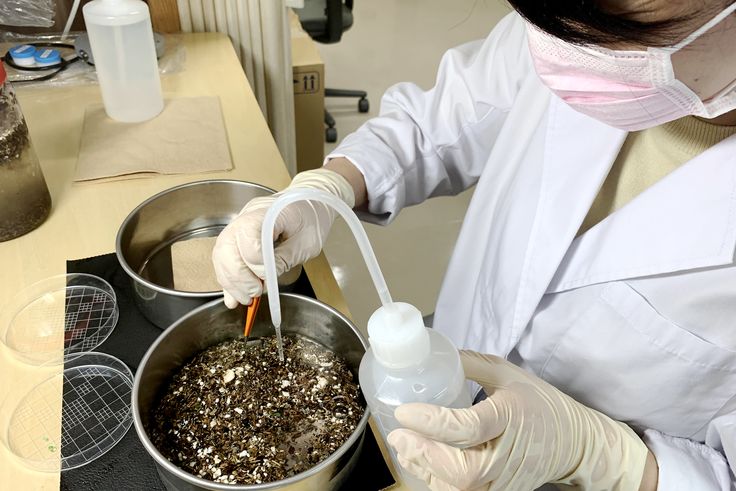Getting a grip on the microplastics threat brewing in the ocean
with Prof. Atsuhiko Isobe
Our lives today simply would not be the same without plastics. The revolutionary materials have permeated nearly every aspect of our lives, from food packaging and medicine to transportation and energy. But despite all their fantastic benefits, they also have the potential to wreak havoc when they find their way into nature.
One place they are unfortunately turning up is in the ocean. While intact items such as plastic bags and bottles are an obvious issue, marine life is facing a potentially bigger threat from microplastics—small pieces of degraded plastic less than five millimeters in size.
“Ecosystems are now dealing with this material that had never before existed in nature but is light weight, easily transported, and long lasting,” says Atsuhiko Isobe, a professor of Kyushu University’s Research Institute for Applied Mechanics at the forefront of microplastics research. “These properties that make plastics such useful materials also make them troublesome pollutants.”

While researchers are currently debating the toxicity of the microplastics themselves, the stress that the easily ingested synthetic particles can cause to marine life is already a major concern, along with the fact that they could eventually make their way to your table in the seafood you eat. Furthermore, studies have shown that microplastics can absorb harmful chemicals, thereby magnifying their potential to do serious damage.
Thus, the race is on to not only find ways to stem the growing problem but also get a grip on just how abundant microplastics in the ocean are and what the future may hold. For this, Isobe has been applying his background as an oceanographer to model the amount and movement of microplastics in the ocean using a combination of field work and numerical simulations.
Through these efforts, his research group has predicted that, if the current trajectory is not changed, microplastics in the Pacific Ocean will double from current levels by 2030 and quadruple by 2060. Aside from giving a picture of where we may be headed, this research also provides scientists with realistic amounts of microplastics to consider as they attempt to clarify the effect the pollutants will have on marine ecosystems.

As a base for this modeling, real-world data is crucial, and Isobe has traveled from north to south collecting plastics from the ocean to get a clearer snapshot of the current situation, becoming the first to report microplastics near Antarctica.
“Antarctica is the least inhabited place in the world, and yet we still found microplastics off the shores, showing just how extensively they have already spread,” Isobe explains.
Alarmingly, Isobe’s research indicates that the waters around East Asia are a hot spot for microplastics, with more than twenty times the world average. As such, he has been collaborating with Thailand and other Southeast Asian countries to tackle the problem head on.
Isobe is today considered a world-leading expert in the area, but it was only a little more than ten years ago that he first started studying microplastics following an experience on the Goto Islands in southern Japan.
“I was shocked by the huge amount of plastic debris littering the beach,” Isobe remembers. “Soon after, I started research to develop a system to identify sources of plastic debris using numerical simulations.”

As the leader of the largest research project in Japan focusing on microplastics, Isobe will continue to monitor and model the microplastics in our oceans, hoping to provide the scientific evidence needed to spur efforts to reduce marine plastic pollution, whether through innovations for producing alternative materials, reducing plastic use, or improving disposal management.
“Because such tiny particles in the vast expanse of the oceans can seem insignificant at first glance, putting numbers on this problem and making it tangible is especially important to drive the change needed to realize sustainable development,” says Isobe.



































